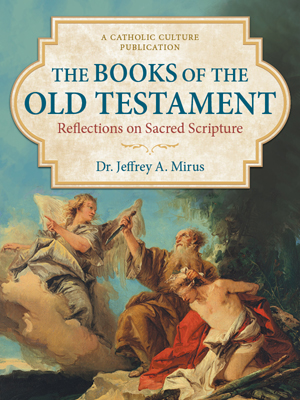The MOST Theological Collection: Mary in Our Life
"Chapter III: The Popes and the Co-redemptrix"
IN THE FIRST CHAPTER we saw that the Fathers of the Church spoke of Mary as the New Eve, thereby giving her a title that holds many important truths about Mary. To learn precisely which truths are contained in the patristic concept we must turn to the guidance of the Church. Now, although this guidance is sometimes given in the form of solemn definitions, such as those of the Immaculate Conception and the Assumption, a great part of the Church's teaching is promulgated in other forms.
A curious misunderstanding often appears even among educated Catholics: it is thought that nothing less than a solemn definition carries any binding force for Catholics. This error had become so common that Pope Pius XII saw fit to strike at it. In his encyclical, Humani generis, of August 12, 1950, he wrote as follows:
Most of the teachings found in encyclicals are on matters that are already settled and accepted in Catholic doctrine. But if the Pope reaches beyond that area, and deliberately gives, in an encyclical or other official document, a judgment on a doctrinal matter that was up to that time controverted, then all Catholics must consider the controversy as settled. They must accept what the Holy Father teaches, giving true internal assent to his words.2 The fact that these statements are not in the form of solemn definitions does not destroy their binding force; after all, the preaching of the Apostles was not in the form of definitions: yet of it Our Lord said: "He who heareth you, heareth Me."3
It is now time to face the problem of whether or not Mary's role of New Eve extended even to immediate co-operation with the New Adam on Calvary. It is well to state the problem as accurately as possible at this point. We have already learned the distinction between the objective and the subjective redemption: the objective redemption consists in Christ's atonement and once-for-all acquisition of the entire treasury of grace for us. The subjective redemption is the distribution of that forgiveness and grace. It is beyond doubt clear that Mary co-operated at least remotely in the objective redemption. She did this by being the Mother of the Redeemer. For she, as representative of the human race,4 gave flesh to the Divine Victim so that He might be able to suffer and die for us.
But now the question is: did Mary also co-operate immediately in the objective redemption? If we say that Mary was present on Calvary much in the same way as John, as a patient spectator, suffering at the sight of the pains of her Son, offering up her sufferings in union with Christ in much the same way as John did, this would not necessarily mean that she co-operated immediately in the objective redemption. For if her atonement and merit were of the same type as John's, her offering would be valuable, very valuable, but it would belong to the order of the subjective redemption only.5 It would not constitute part of the price accepted by the eternal Father. Therefore, if we wish to prove that Mary did co-operate immediately in the objective redemption, we must show that her merits and sufferings were not merely those of a saintly but private person; we must show that they were those of a person appointed by God the Father to co-operate officially with the work of the Son. She would then share in a joint work, just as the Old Eve had shared in the joint work of original sin.
Of course, we would not thereby imply that the price paid by Christ Himself was in any way insufficient. We would merely mean that one and the same thing-redemption-would be earned on two different titles: the one a perfect and, in itself, completely adequate title; the other, a title of a lower order, quite insufficient of itself. Then the Redemption would really be parallel to the fall: in both we would have a head of the race, whose work alone was sufficient and necessary, joined by an inferior sharer, whose work alone would be definitely insufficient.
There are various ways in which a papal text might make dear that Mary shared in the Redemption on Calvary in this official way. One way, of course, would be to say that Mary was present on Calvary as the New Eve. Another way would be to say that Mary merited the same thing that Christ merited. There are also other ways, as we shall see.
Theological interest in the question of Mary's co-operation in the Redemption has not been restricted to modern times. Medieval theologians also discussed it, but it is only within the past century that papal pronouncements on the matter have become numerous. Pope Pius IX and Pope Leo XIII gave us several texts that could easily be understood to mean that Mary did share in this immediate and official way in the sacrifice on Calvary, but unfortunately their words are not so clear as to exclude readily all reasonable doubt.6
To Saint Pius X belongs credit for giving us the first really clear statements about Mary's role on Calvary. This saintly Pope chose as the motto of his reign: To restore all things in Christ. Before the first year of his pontificate was over, he had issued a memorable encyclical, Ad diem illum, in which he made clear that the prime means by which he hoped to restore all things in Christ was through Mary. But he also gave priceless light on the problem we are investigating. After quoting a statement of St. Bonaventure that Mary on Calvary would have much preferred to suffer in place of her Son, Saint Pius X goes on:
These words are so dear that no commentary should be needed: the Holy Father simply refers to Mary on Calvary as the Reparatrix of the world. But, as though fearing that some theologian might scruple over his meaning, the Holy Father, somewhat further on, gives still another, more forceful statement of the same truth:
Here we can see how meticulously careful the holy Pontiff is: not satisfied with having called Mary "Reparatrix of the lost world," he now repeats the same idea in two other ways, saying that Christ associated her with Himself in the Redemption, and that she merited, in a lesser way, what Christ merited in strict justice.9 But there is more: the little phrase "as they say" gives notice to theologians that the Holy Father wants his words on the relation of Mary's merit to Christ's merit to be understood in the sense in which such words are commonly used by theologians. He is obviously alluding to the fact that quite a number of Marian theologians had been using just that same balance of terms on merit to describe the co-operation of Mary with Christ.10 Therefore Saint Pius X has told us in several very precise ways that Mary was officially associated with her Son even on Calvary-in other words, that the role of New Eve extends even to the great sacrifice of Calvary.
The next two Popes, Benedict XV and Pius XI, could hardly hope to improve on the precision of Saint Pius X. They did, however, make many more statements which we might analyze.11 We may quote but one brief passage from Pope Benedict XV:
The last words, "... together with Christ she has redeemed the human race," are forceful enough, even though not couched in the more theological language of Saint Pius X.
Pope Pius XII has been justly called "the Pope of Mary." To him we are indebted for several texts of lucid clarity on Mary's role of Calvary; but for the present we shall content ourselves with quoting two of them.13 The first, from his great encyclical on the Mystical Body, is especially forthright:
Here indeed is a simple and direct answer to our question. We asked whether we might extend the New Eve concept of Tradition so far as to include an immediate and official sharing in the sacrifice on Calvary. Now the living voice of the Church, which alone can pronounce on the correct interpretation of Scripture and Tradition, tells us that Mary "as the New Eve, offered Him on Golgotha...." Surely this is the solution we have been seeking.
A text of special beauty is found in a passage on the Queenship of Mary. On May 13, 1946, Pope Pius XII sent a Cardinal legate to represent him at Fatima, to place a crown on the statue there. He himself spoke to the crowds over the Vatican radio:
There is a brilliant turn of expression in this text which might escape the attention of the reader. We note that this Pope said that Jesus is King "by nature and by right of conquest." This is easy to follow: He is King by nature since He is God. The expression "by right of conquest" is familiar to theologians. Mankind had been in the captivity of the devil Christ loosed us from that captivity by the Redemption; hence we are His "by right of conquest." There is nothing new in this reference to Christ. But note what follows: After making provision for due subordination, Pope Pius XII gave us various titles by which Mary is Queen. Among them we find "by right of conquest." Now it is a general law of the interpretation of language that when the sane speaker uses the same words in the same context, he ought, unless he makes clear otherwise, to mean them in the same sense. In the present passage, the Pope stated clearly what differences in meaning he intended when he applied the words "by right of conquest" to Mary as well as to Christ. For he said, "Through Him, with Him, and subordinate to Him, Mary is Queen ... by right of conquest." Hence, since Pope Pius XII himself has given us the necessary qualifications to be made in his use of the expression, no one ought to add any others. The conclusion is easily drawn: when applied to Christ, the expression refers to the very culmination and heart of the objective redemption, Calvary itself; when applied to Mary, it means that through Him, with Him, and subordinate to Him, she also co-operated in the objective redemption on Calvary itself.16
To sum up, then, Saint Pius X stated that Mary, the Reparatrix of the lost world, was associated with Christ even on Calvary, and thereby merited in a lesser way what He merited for us in strict justice. Pope Benedict XV, in striking language, said of Mary that together with Christ she has redeemed the human race; and finally, Pope Pius XII, in the most forthright manner possible, told us that Mary acted as the New Eve on Calvary, and therefore reigns as Queen with her Son by tide of conquest. Hence we can see a certain pattern unfolding: Mary is most intimately associated with her Son not only at the beginning of His course, the Annunciation, but also in the sacrifice of Calvary. In succeeding chapters we shall see the further evolution of this constant sharing.






